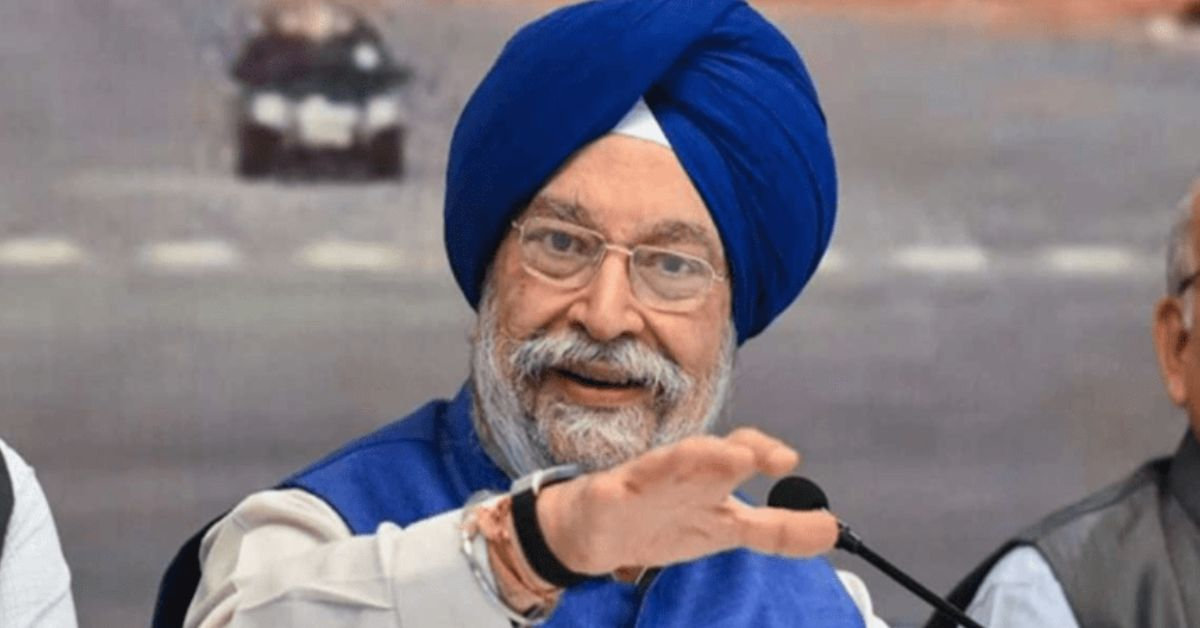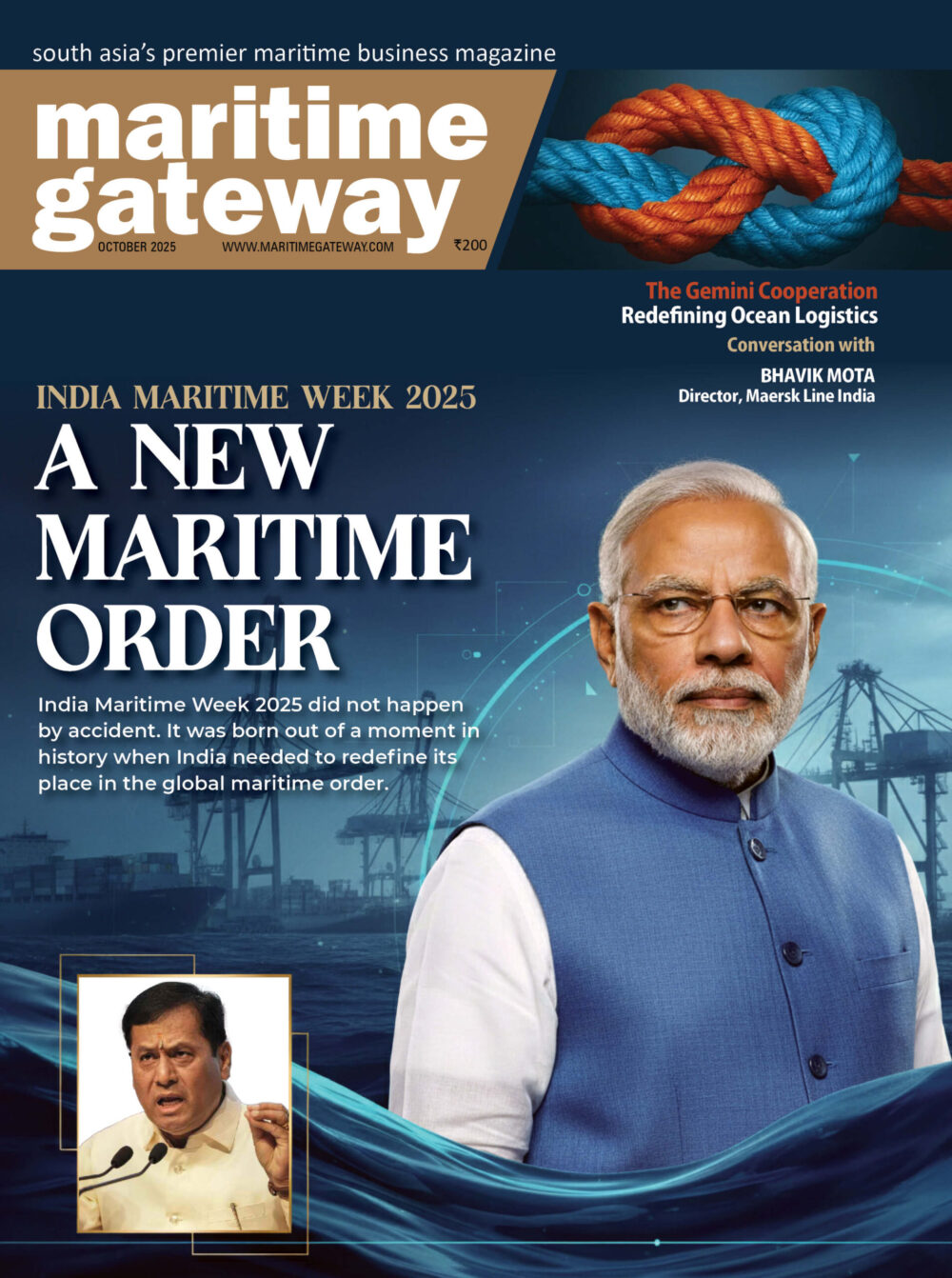India’s maritime industry is entering a transformative era, with investments worth ₹8 trillion and the creation of 1.5 crore new jobs expected by 2047, Union Minister for Petroleum and Natural Gas Hardeep Singh Puri announced at India Maritime Week 2025 in Mumbai. The minister said the sector is emerging as a key driver of India’s trade expansion, innovation, and global partnerships.
“India’s economic progress is inseparable from its maritime strength,” Puri said, noting that the country’s ports and shipping infrastructure are central to achieving the Viksit Bharat 2047 vision.
Highlighting the scale of India’s infrastructure development, he shared that the first phase of Jewar Airport in Uttar Pradesh will be operational by the end of November. “The combined footfall of Jewar and IGI airports will surpass Heathrow and several other major airports worldwide,” he said, underlining India’s growing connectivity and trade potential.
Describing India Maritime Week as “a celebration of India’s deep oceanic heritage and its bright future,” Puri said the event brought together over 100 countries, 500 exhibitors, and more than one lakh delegates, fostering partnerships that will “define the next maritime century.”
Tracing India’s rich seafaring history, the minister noted that the country’s maritime legacy stretches “from the dockyards of Lothal to the Chola fleets and the Maratha navies,” reflecting centuries of trade, defense, and oceanic prowess.
On India’s growing economic strength, Puri pointed out that the nation’s GDP has reached USD 4.3 trillion, with over 50% of economic activity linked to external trade — underscoring the vital role of shipping and ports in sustaining growth.
The event, inaugurated by Union Home Minister Amit Shah, featured key leaders including Maharashtra Chief Minister Devendra Fadnavis, Gujarat Chief Minister Bhupendra Patel, Goa Chief Minister Pramod Sawant, Odisha Chief Minister Mohan Charan Majhi, and Union Shipping Minister Sarbananda Sonowal.
In his inaugural address, Shah declared that “this is India’s Maritime Moment,” marking the country’s evolution from the “Gateway of India” to the “Gateway of the World.” He emphasized India’s 11,000-kilometre coastline and 13 coastal states and Union Territories that together contribute nearly 60% of the national GDP, illustrating the strategic weight of the maritime economy.
Strengthening India’s Energy Shipping Capabilities
Puri also announced a major policy shift aimed at reducing India’s dependence on foreign vessels for energy transportation. He revealed that India’s three major oil marketing companies — Indian Oil Corporation, Bharat Petroleum, and Hindustan Petroleum — spend about USD 8 billion every five years on chartering foreign crude carriers, a cost that could fund the purchase of an entirely new fleet.
Currently, around 28% of India’s total trade volume is accounted for by oil and gas, yet only 20% of this cargo is transported on Indian-flagged vessels. “This challenge is being turned into an opportunity,” Puri said, announcing new initiatives to enhance domestic ship ownership and operations.
Key measures include:
- Aggregating public-sector cargo demand to enable long-term charters for Indian carriers.
- Implementing the Ship Owning and Leasing Entity (SOLE) model to boost Indian ownership of vessels.
- Establishing a Maritime Development Fund to provide long-tenor, low-cost vessel financing.
- Launching Shipbuilding Financial Assistance Policy 2.0, offering higher grants for building LNG, ethane, and product tankers domestically.
The government’s renewed focus is driven by India’s heavy import dependence — 88% for crude oil and 51% for natural gas. In FY 2024–25 alone, the crude import bill exceeded USD 150 billion, with freight charges forming a significant portion of the landed cost.
Expanding Maritime Infrastructure
Under Prime Minister Narendra Modi’s leadership, India’s port infrastructure has seen remarkable growth. Port capacity has almost doubled from 872 million tonnes per annum in 2014 to 1,681 million tonnes today, while cargo volumes rose from 581 million tonnes to 855 million tonnes.
Operational efficiency has also improved significantly — the average turnaround time at ports has dropped by 48%, from 96 hours in FY 2014–15 to 49.5 hours in FY 2024–25, and idle time has been reduced by nearly 29%.
Boost to Domestic Shipbuilding
Puri said Indian shipyards such as Cochin Shipyard, L&T Kattupalli, GRSE Kolkata, and HSL Visakhapatnam, along with private yards in Goa and Gujarat, are now capable of building and refitting world-class vessels.
Collaborations like those between Cochin Shipyard, L&T, and South Korea’s Daewoo for LNG and ethane carriers, and tie-ups with Mitsui OSK Lines, are bringing cutting-edge global technology to Indian shores.
“We are not just Making in India — we are preparing to Sail for the World,” Puri asserted.
Global Trade Corridors and Future Outlook
India’s maritime expansion is being strategically aligned with emerging trade routes such as the India–Middle East–Europe Economic Corridor (IMEC) and the International North-South Transport Corridor (INSTC), which will link Indian ports to Europe, Central Asia, and Africa.
By 2047, India’s maritime sector is expected to serve as a cornerstone of the nation’s transformation into a developed economy, powered by innovation, sustainability, and global connectivity.









